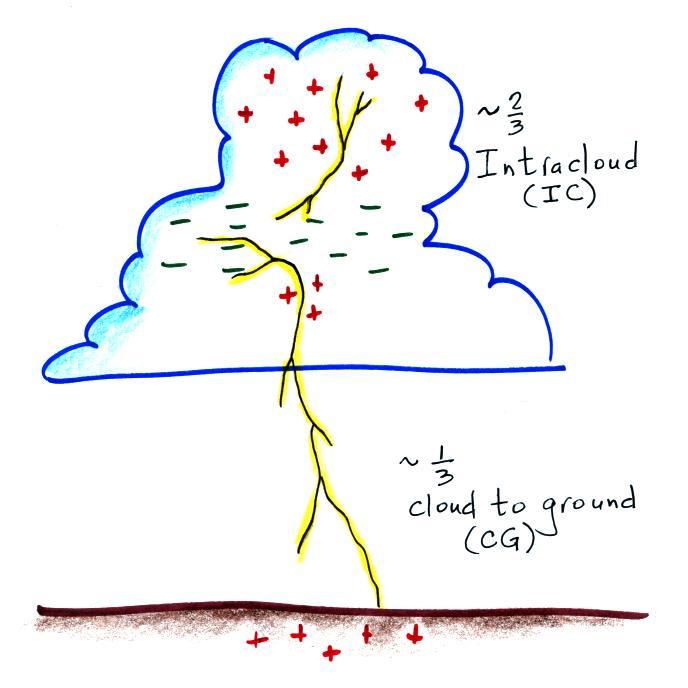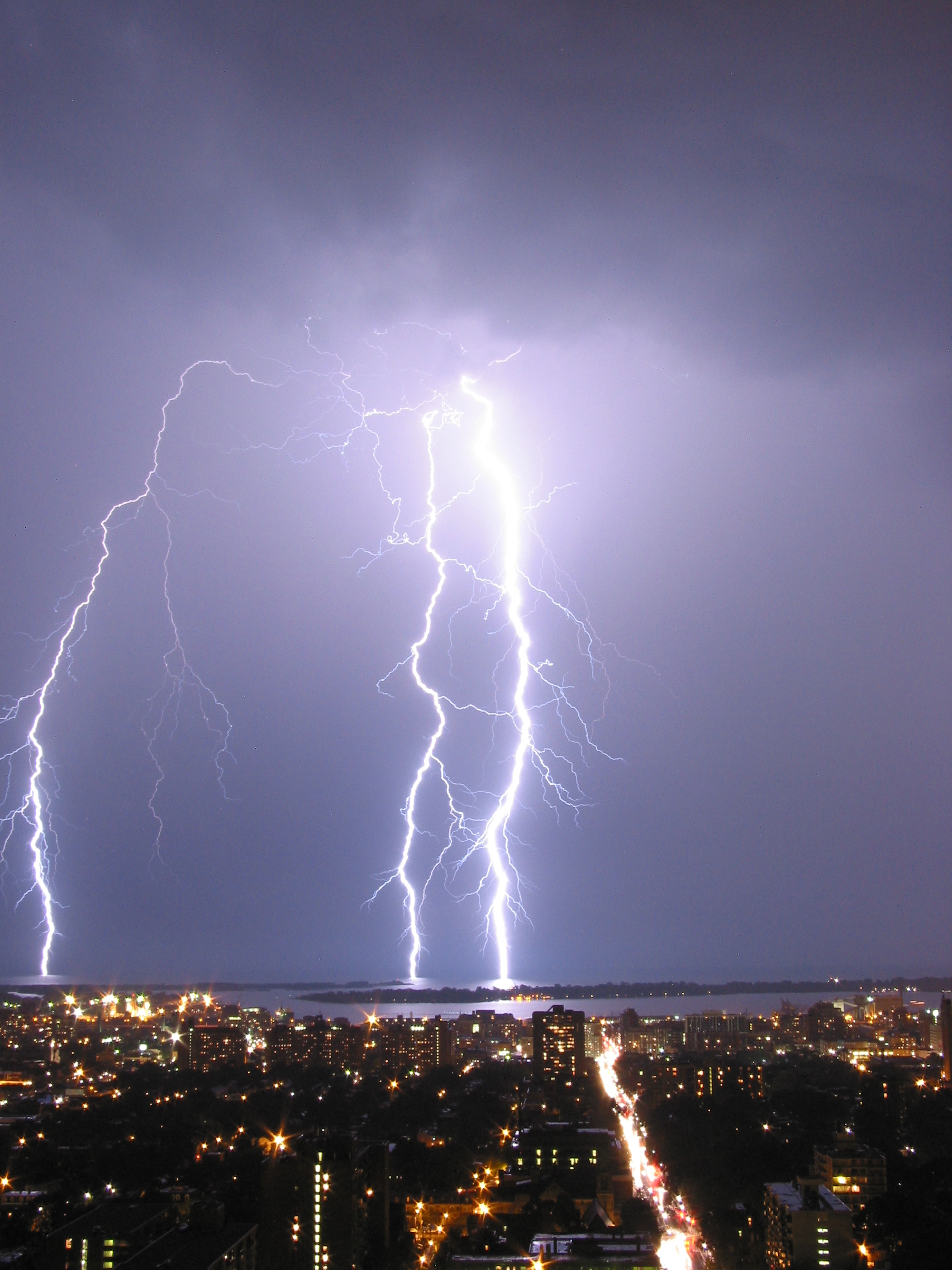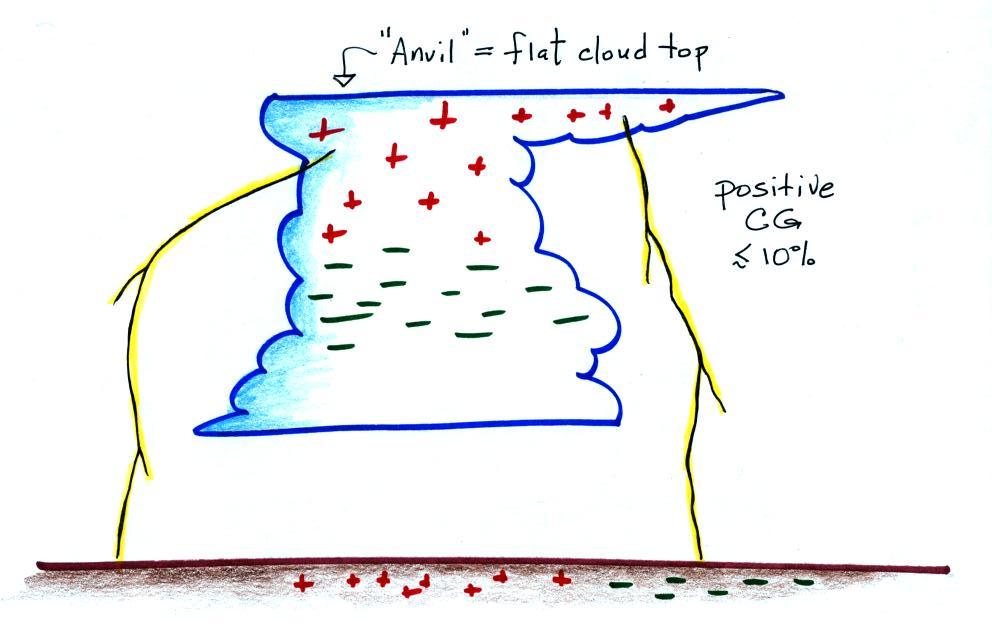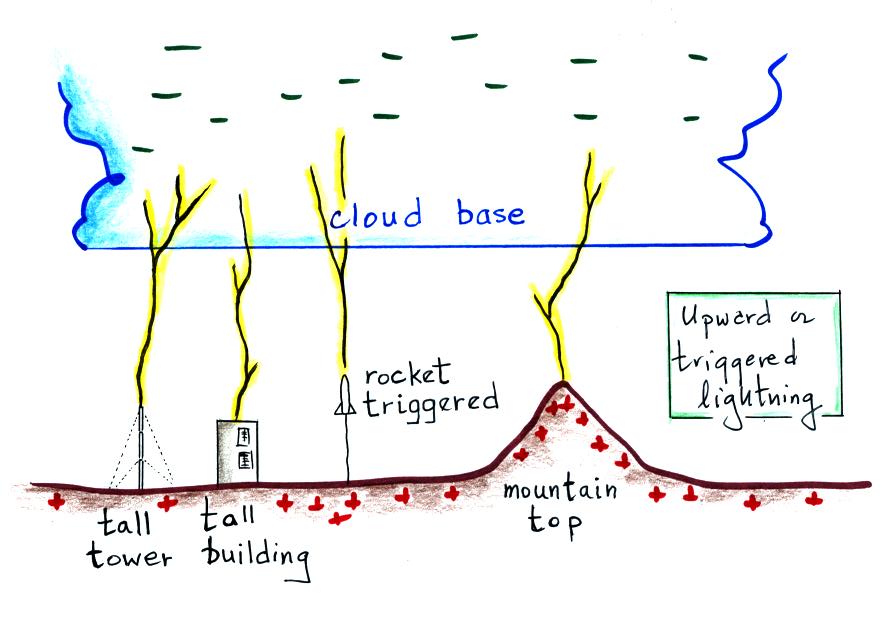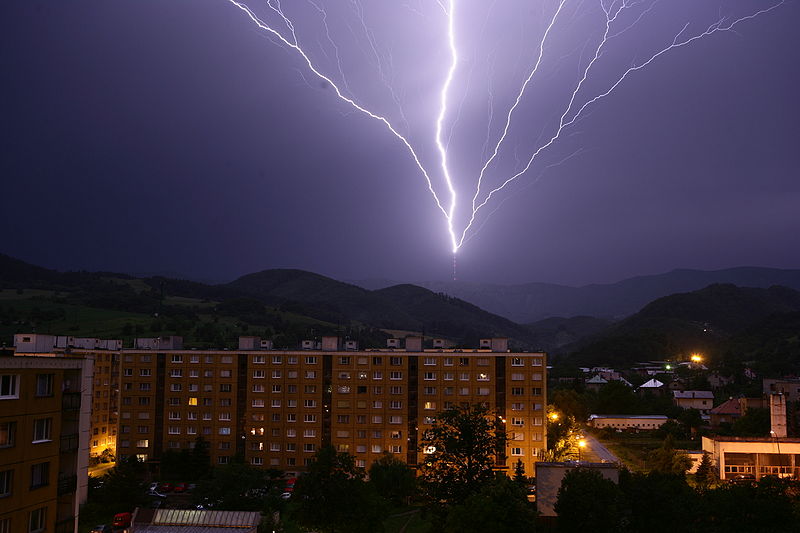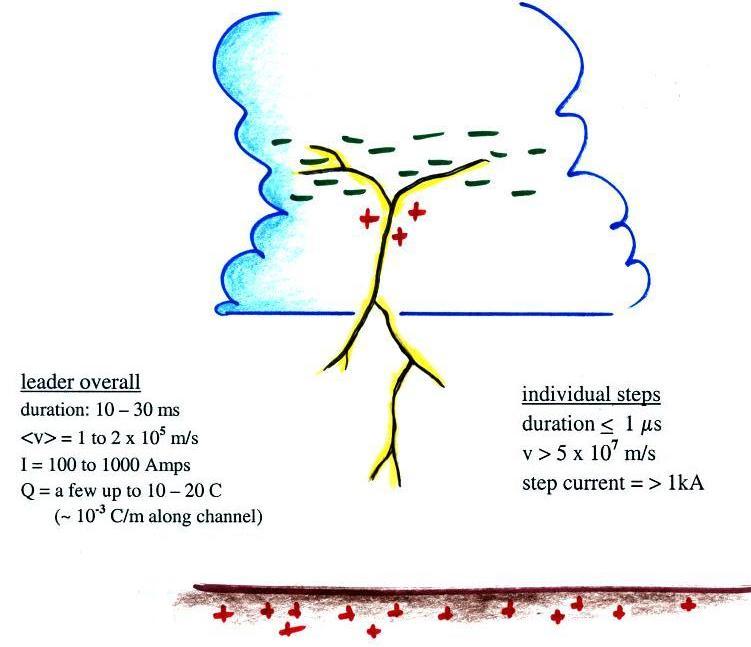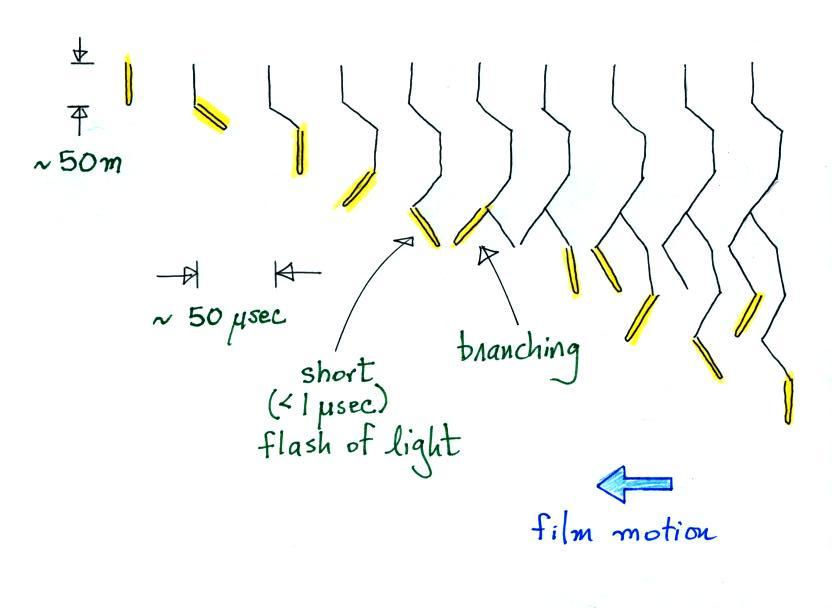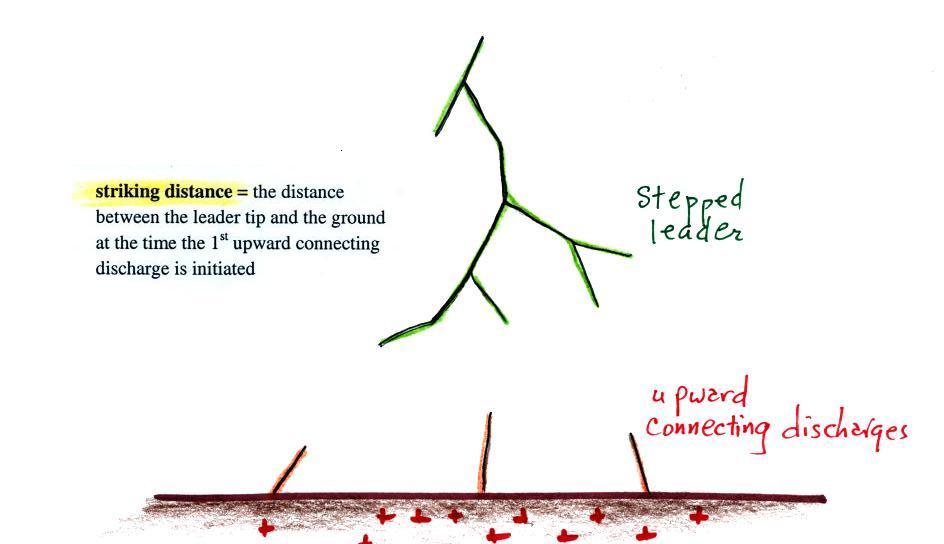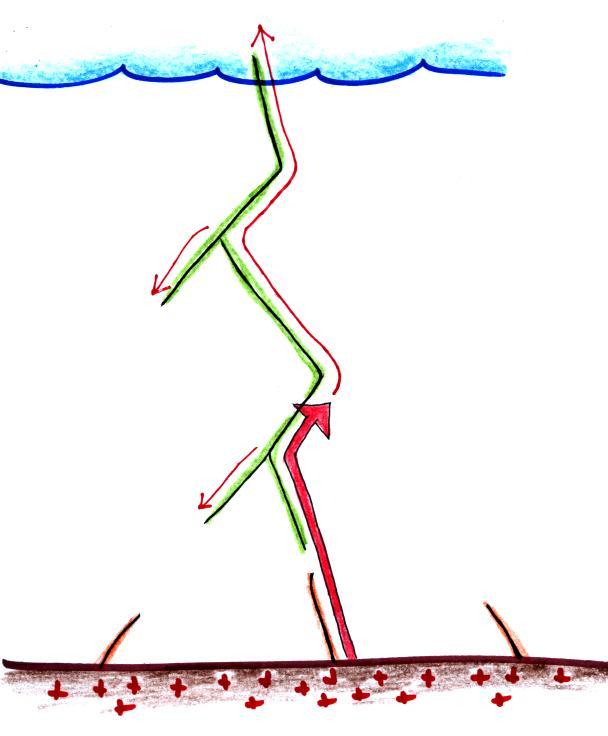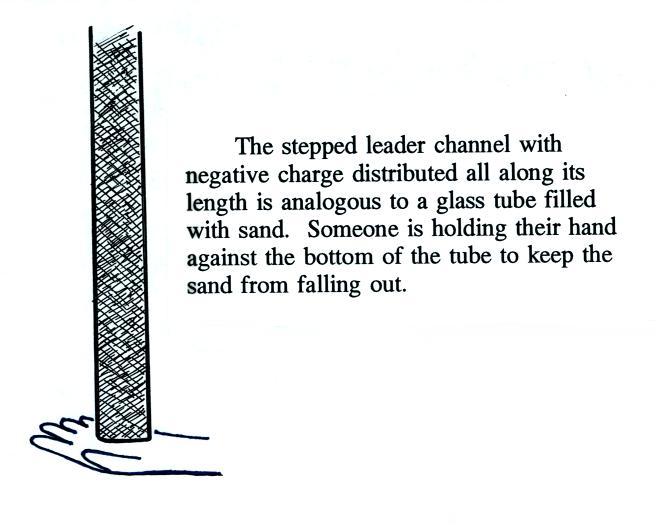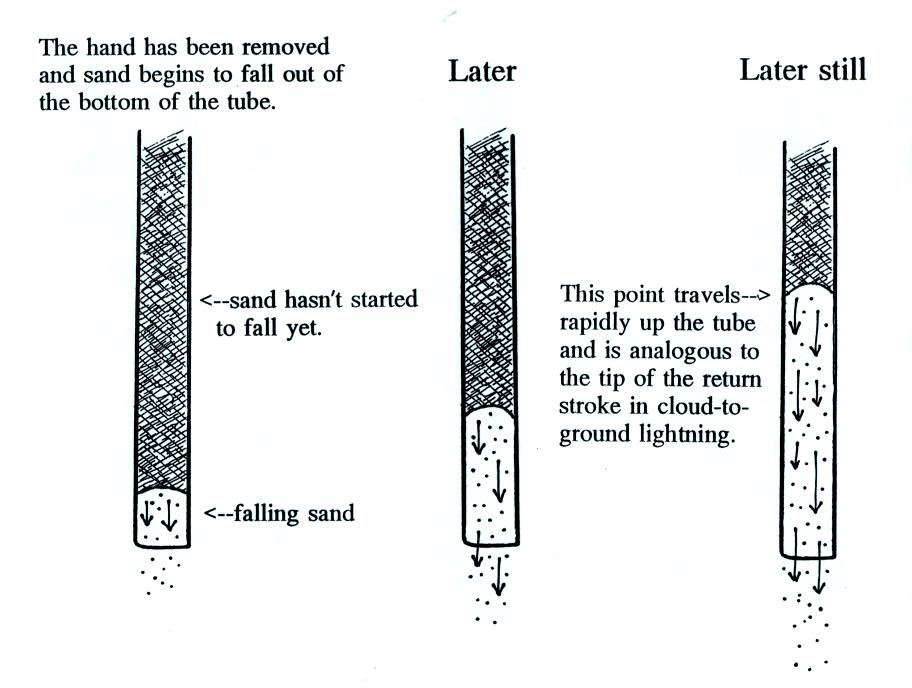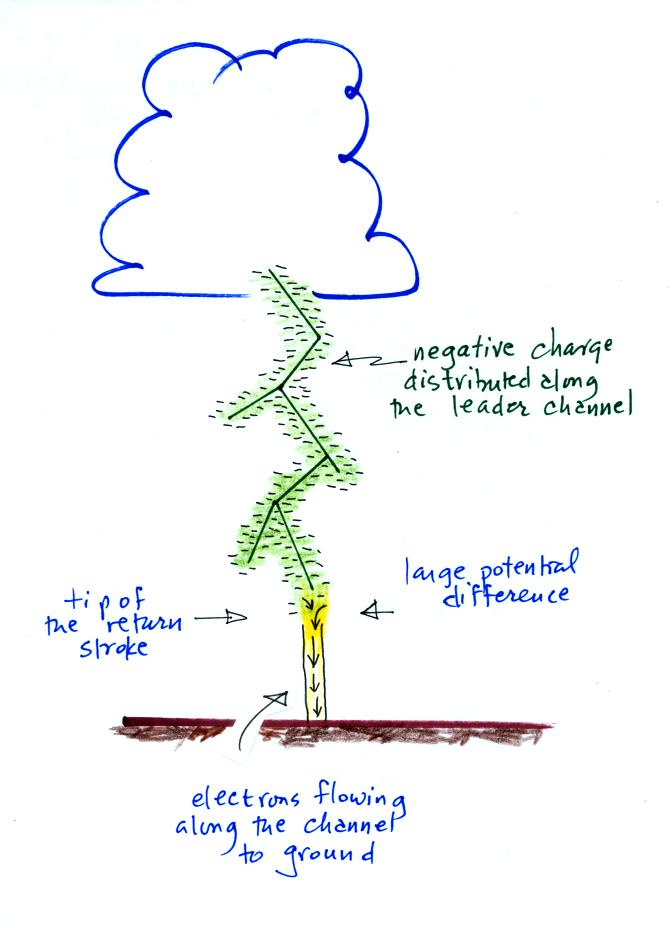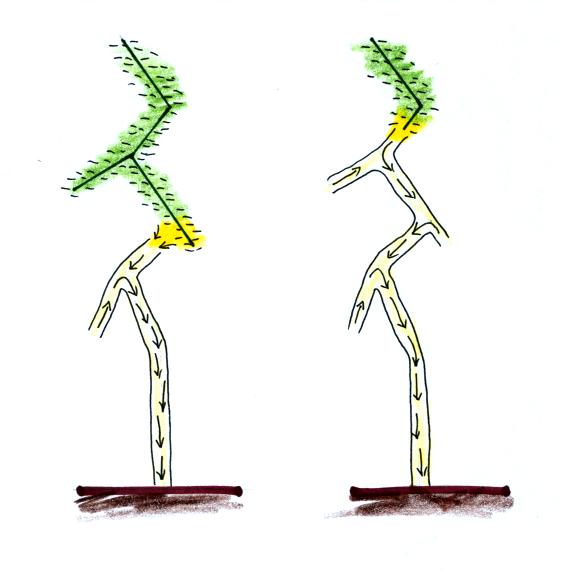You
probably didn't enroll in this class thinking that you'd be
spending so much time reviewing principles of electricity &
magnetism, learning about small ions, conductivity, Maxwell currents
and that sort of thing. No you probably thought (hoped?) the
class
would be mostly about lightning. And much of the class will be,
beginning with this lecture. We'll start with a fairly
qualitative look at lightning
phenomenology. We'll concentrate primarily on cloud-to-ground
lightning.
Broadly speaking there are two types of lightning
Intracloud (IC) lightning remains in the cloud and is the most
common type of discharge. Approximately 1/3 of lightning
discharges travel between charge in the cloud and the ground.
We'll use the term cloud-to-ground even though some
relatively rare lightning discharges start at the ground and travel
upward toward the cloud.
Most CG discharges, "negative cloud-to-ground", carry negative
charge to ground.
Most CG discharges begin with an in-cloud, preliminary breakdown,
process. Also one of the lower positive charge centers LPCC) is
probably involved in the initiation of most negative CG
discharges. Pay attention
to the branching in this and the figures that follow. The
branching tells you the direction of the initial leader process in the
discharge (we'll learn more about the leader processes shortly).
The photograph above is from a Wikipedia article on
lightning.
We've mentioned before that some CG discharges begin higher in the
cloud and carry positive charge to the ground.
Positive CG discharges are more common
(i) in severe thunderstorms where vertical wind shear is present
(faster winds at upper levels than lower altitudes). Normally the
positive charge center is above
the main negative charge and discharge between the two remain in the
cloud. Wind shear can cause the cloud to tilt and move some of
the positive charge away from a position directly above the main
negative charge center. Discharges can then travel from the cloud
to the ground.
(ii) in storms at high latitudes where the positive
charge center is closer to the ground.
(iii) in winter storms. The
positive
charge center is closer to the ground. Vertical wind shear may
also be present
(iv) at the ends of summer storms. The
cloud may
tilt and signficant amounts of positive charge may be found in the
cloud anvil and away from the main body of the cloud.
(v) in storms with an inverted charge distribution as
discussed in Lecture 12.
Positive CG discharges usually just have a single return stroke
though the return stroke peak current is often very large 100,000 A or
more (negative CG discharge peak return stroke currents are
usually 30,000 A or less). The positively charged leader
than initiates a positive CG discharge shows little or no stepping
(we'll
discuss
the
negatively
charged
"stepped
leader"
that
initiates negative
CG discharges shortly)
Tall buildings and towers are struck relatively often by
lightning. Often these are discharges initiated or triggered by
the structure itself.
Note the direction of the channel branching. These
discharges begin at the ground with the development of an
upward moving, positively charged, leader (very
rarely the discharge can begin with an upward negatively charged leader).
The
upward
leader
is
followed
by downward negatively charged leaders and upward return strokes, which
is, as we shall see, the normal sequence of events in negative CG
lightning. The photo above shows upward lightning initiated by
the Suchá Hora
transmitter tower as seen from Banksa Bystrica,
Slovakia, and is from a Wikipedia article on
lightning.
We saw in an earlier lecture that because they enhance the local
electric field, launch vehicles sometimes trigger and are struck by
lightning. Researchers are now able to trigger lightning
discharges using small
rockets. A spool of wire attached to the base of the rocket
unwinds as the rockets travels upward. If conditions are right,
an upward leader is initiated when the rocket reaches an altitude of
100 m or so. Direct measurements of lightning return stroke
currents and close (10 meters or less) E and B field measurements can
be made.
Now we'll look in more detail at the sequence of processes that
occur during
negative cloud-to-ground discharges.
The discharge begins with some kind of in-cloud preliminary discharge
involving the main negative charge center and one of the lower positive
charge centers. Then a downward
moving, negatively-charged discharge begins moving toward the
ground. This is called the stepped leader discharge because the
channnel advances in steps of about 50 m length every 50 microseconds
or so. The 50 m long channel extensions occur rapidly (less than
1 microsecond duration) and produce a bright flash of light.
Think of dropping a strobe light from aircraft altitude and watching it
flash on and off as it falls to the ground.
It takes a few 10s of milliseconds for the step leader to travel a
few kilometers from the cloud to near the ground. This
corresponds to an average speed of 1 to 2 x 105 m/sec. Negative
charge is carried from the main negative charge center and distritbuted
along the length of the leader channel. Currents flowing in
the leader channel range from 100s to about 1000 Amps.
The individual step, or extension of the leader channel, occurs in less
than 1 microsecond. The velocity of the step is 5 x 107 m/s of
faster and the step current is 1 kA or more.
Images of stepped leader have been captured using streaking
cameras (cameras with moving film) and, more recently, on video cameras
with high frame rates. The next figure tries to illustrate how a
descending leader might appear on film.
Because the film is moving (to the left), each of the images is
displaced
slightly (to the right) on the film. Extensions of the channel
produce the most light (highlighted in yellow above) but
the
remainder
of
the channel is usually weakly
illuminated. The
descending channel breaks up into brances and then the ends of the
separate branches begin to independently step and move toward the
ground.
We really won't cover the attempts that have been made to understand or
simulate stepped leader channel development. It would be very
difficult to produce a stepped leader discharge in a laboratory because
even a single step is 50 m long. Here's my conception of what
leads up to an extension of the stepped leader channel.
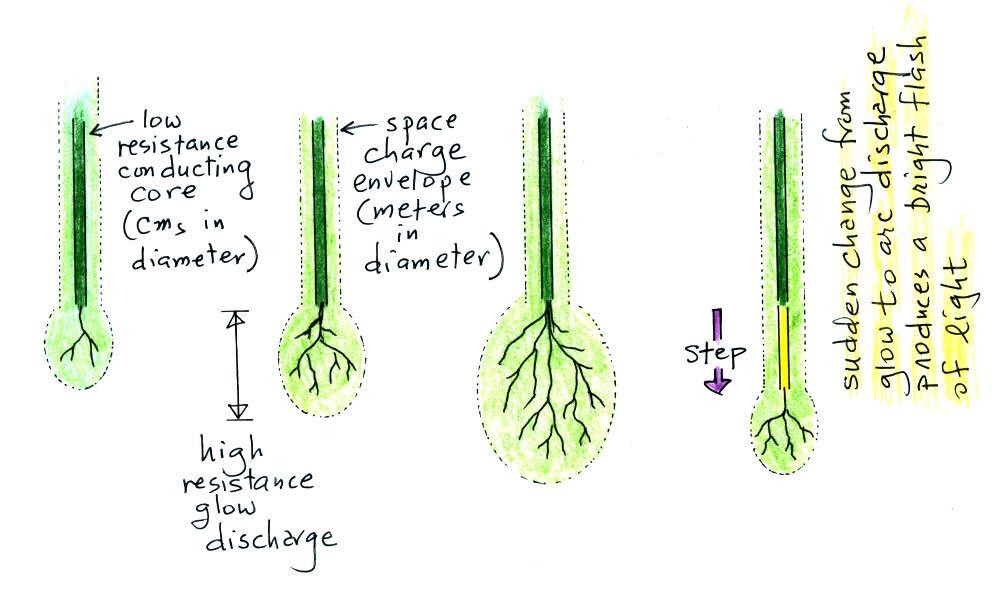
Basically the leader consists of a low resistance arc core that is
surrounded by a space charge envelope. High fields at the bottom
end of the
propagating channel create discharge tendrils that grow out into the
air ahead
of the leader. Initially this is a high resistance glow
discharge. As the discharge filaments increase in number
and lengthen more and more current flows from the bottom end of the arc
core. At some point, a portion of the glow discharge channel will
change to a conducting arc. It is this sudden change from glow to
arc discharge that produces a brief pulse of current and light.
This is
the step that effectively lengthens the leader channel.
This might be a good time to have a look at a slow motion
video of an actual stepped leader. This
video is a negative cloud to ground discharge with just a
single return stroke. The discharge was captured with a video
camera that captures 7200 images per second (the video is then slowed
down considerably during play back).
When the stepped leader approaches to within a few hundred meters of
the ground, the electric field at the ground intensifies to the point
that several positively charged, upward propagating discharges are
initiated. One of these will intercept the stepped leader and
determine where the lightning will strike the ground.
The striking distance referred to in the figure is typically 10 to 20 m
above flat ground and 20 to 100 m above taller objects. This is a
reasonably important parameter in the design of lightning protection
design, a topic we will cover later in this class.
There are probably less than a dozen good photographs of upward
connecting discharges. One of the best was taken by
Johnny Autry in Alabama. The photograph is copyrighted but I've
sketched it below and have pointed out some of the main features.
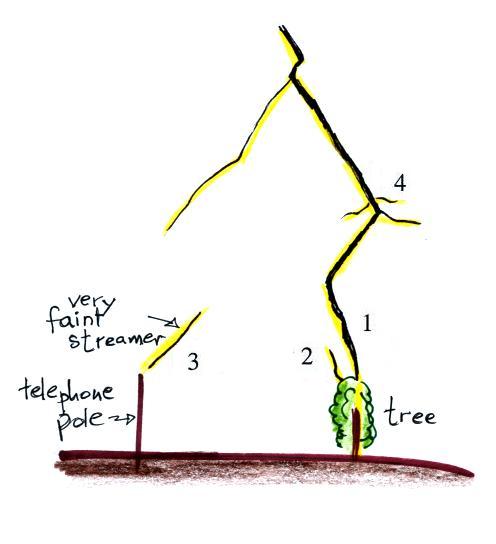
Most of the remaining examples can be seen on pps 141 & 142 in
Rakov and Uman's book "Lightning Physics and Effects." As chance
would have it this portion of the book can be viewed online here
(you may have to scroll up or down to find pps 141 & 142).
Junction between the upward connecting discharge and the stepped
leader electrically connects charge in the cloud to ground and a large
ampltitude pulse of current travels rapidly back up the channel.
This is the first return stroke discharge.
The tip of the return stroke propagates up the channel at a speed
of about 1 x 108 m/s (1/3 the
speed of light) taking about
100
microseconds to travel from the ground to the cloud. The 1st
return stroke has a peak current of typically 30 kA. Current
rises to peak value in a few microseconds and the peak dI/dt is about
100 kA/us. The return stroke heats the air to a peak temperature
of about 30,000 K (5 times hotter than the surface of the sun).
The overpressure creates a shock wave that quickly decays into a sound
wave that we hear as thunder.
I often use the following analogy to help understand the return
stroke process.
Now imagine what you would see if the hand at the bottom of the
tube is removed.
And now back to the stepped leader channel and all the negative
space charge surrounding it.
The intense action is really at the tip of the upward propagating
return stroke. The large potential difference (cloud potential in
close proximity to ground potential) ionizes the air, creates large
currents, heats the air, and produces a bright flash of light.
The potential difference wave can progagate rapidly up the channel (and
out into the branches). Once the potential wave passes a point on
the channel the space charge envelope collapses and electrons flow more
slowly down the conducting channel to ground.
This is probably a good place to end our first lecture on lightning
phenomenology.
